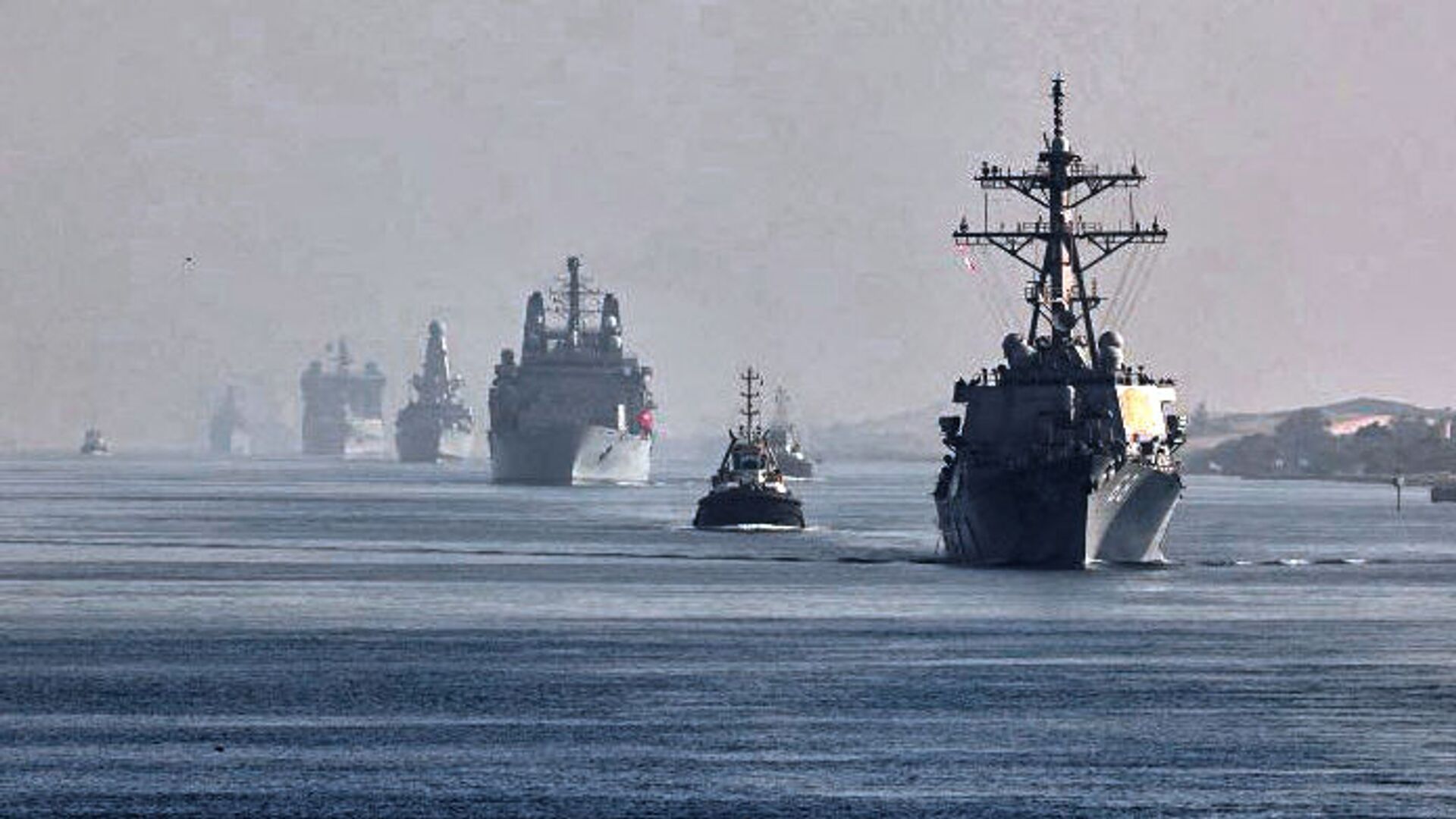https://sputnikglobe.com/20211110/uk-carrier-strike-group-tracked-sidestepped-chinese-submarines-during-trip-through-south-china-sea-1090628807.html
UK Carrier Strike Group Tracked, Sidestepped Chinese Submarines During Trip Through South China Sea
UK Carrier Strike Group Tracked, Sidestepped Chinese Submarines During Trip Through South China Sea
Sputnik International
The existing submarines from the navy of the People's Liberation Army (PLA) are known to be louder than their modern counterparts in the Russian or American... 10.11.2021, Sputnik International
2021-11-10T16:14+0000
2021-11-10T16:14+0000
2023-05-28T15:16+0000
military & intelligence
china
submarines
united kingdom (uk)
https://cdn1.img.sputnikglobe.com/img/07e5/07/10/1083398847_0:24:695:415_1920x0_80_0_0_6fb91f1c62715224f6db3f38b256fd0a.jpg
Helicopters and frigates operating as a part of the HMS Queen Elizabeth aircraft carrier strike group managed to detect and track Chinese submarines during their mission in the disputed waters of the South China Sea, according to remarks made by Commodore Steve Moorhouse - the commanding officer of the group - in an interview with Sky News.The waters of the disputed sea are mostly controlled by Beijing and therefore there's a heavy presence of Chinese jets - which followed the carrier strike group during its mission between August and October 2021 - and submarines. The latter, however, could not properly follow HMS Queen Elizabeth precisely because the UK forces were tracking their movements and directing the British carrier so that it never crossed paths with the Chinese subs, Moorhouse said.The Chinese jets, in turn, continued to follow the strike group, but remained at "safe and professional and appropriate ranges", Moorhouse revealed. They would fly close enough to be within range to fire a missile and would then turn away showing what they could do if they wanted to. Still, none of the HMS Queen Elizabeth's jets, mostly F-35 stealth fighters, were scrambled to intercept them for the lack of necessity, the commodore said. Chinese submarines, including nuclear-powered Type 093, are known to be on the noisier side of "silent hunters". According to some military experts, their sound signatures are as loud as that of submarines made in the US, USSR and Russia between the Eighties and the Nineties. Both countries have since developed much quieter subs, but Beijing is still working on its Type 095 submarine, which is promised to be less detectable by sonars. It is unclear when the new submersible boat will become available to the People's Liberation Army (PLA) Navy.
https://sputnikglobe.com/20210912/suspected-chinese-submarine-spotted-near-japans-southern-islands-1089001172.html
china
united kingdom (uk)
Sputnik International
feedback@sputniknews.com
+74956456601
MIA „Rossiya Segodnya“
2021
Tim Korso
https://cdn1.img.sputnikglobe.com/img/07e6/03/0d/1093831826_0:0:216:216_100x100_80_0_0_e3f43a960af0c6c99f7eb8ccbf5f812c.jpg
Tim Korso
https://cdn1.img.sputnikglobe.com/img/07e6/03/0d/1093831826_0:0:216:216_100x100_80_0_0_e3f43a960af0c6c99f7eb8ccbf5f812c.jpg
News
en_EN
Sputnik International
feedback@sputniknews.com
+74956456601
MIA „Rossiya Segodnya“
Sputnik International
feedback@sputniknews.com
+74956456601
MIA „Rossiya Segodnya“
Tim Korso
https://cdn1.img.sputnikglobe.com/img/07e6/03/0d/1093831826_0:0:216:216_100x100_80_0_0_e3f43a960af0c6c99f7eb8ccbf5f812c.jpg
military & intelligence, china, submarines, united kingdom (uk)
military & intelligence, china, submarines, united kingdom (uk)
UK Carrier Strike Group Tracked, Sidestepped Chinese Submarines During Trip Through South China Sea
16:14 GMT 10.11.2021 (Updated: 15:16 GMT 28.05.2023) The existing submarines from the navy of the People's Liberation Army (PLA) are known to be louder than their modern counterparts in the Russian or American navies. Although Beijing has worked on making their submersible vessels quieter, it is unclear when they will become available to the Chinese navy.
Helicopters and frigates operating as a part of the HMS Queen Elizabeth aircraft carrier strike group managed to
detect and track Chinese submarines during their mission in the disputed waters of the South China Sea, according to remarks made by Commodore Steve Moorhouse - the commanding officer of the group - in an interview with Sky News.
The waters of the disputed sea are mostly controlled by Beijing and therefore there's a heavy presence of Chinese jets - which followed the carrier strike group during its mission between August and October 2021 - and submarines. The latter, however, could not properly follow HMS Queen Elizabeth precisely because the UK forces were tracking their movements and directing the British carrier so that it never crossed paths with the Chinese subs, Moorhouse said.
"On a couple of occasions we were confident we knew where their submarines were. So we literally almost hold the submarine where it is using our frigates and helicopters and then we can move the carrier around it, literally side-stepping it, so we can continue on our way safely."
The Chinese jets, in turn, continued to follow the strike group, but remained at "safe and professional and appropriate ranges", Moorhouse revealed. They would fly close enough to be within range to fire a missile and would then turn away showing what they could do if they wanted to. Still, none of the HMS Queen Elizabeth's jets, mostly F-35 stealth fighters, were scrambled to intercept them for the lack of necessity, the commodore said.
"In that sort of cat and mouse type game, I am absolutely clear they are turning away at ranges where they are probably using us to facilitate their own training in the same way that we would do it towards them. So, it wasn't causing us a concern".

12 September 2021, 06:06 GMT
Chinese submarines, including nuclear-powered Type 093, are known to be on the noisier side of "silent hunters". According to some military experts, their sound signatures are as loud as that of submarines made in the US, USSR and Russia between the Eighties and the Nineties. Both countries have since developed much quieter subs, but Beijing is still working on its Type 095 submarine, which is promised to be less detectable by sonars. It is unclear when the new submersible boat will become available to the People's Liberation Army (PLA) Navy.



